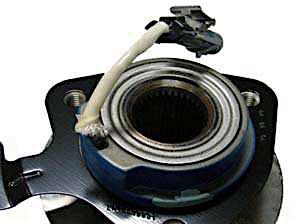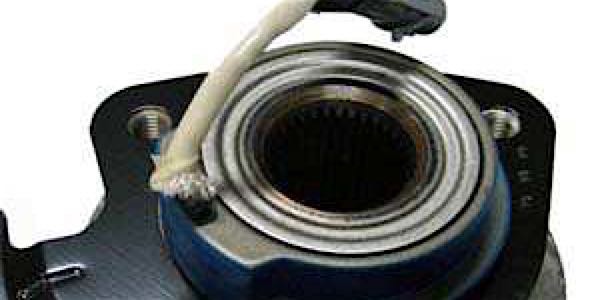ABS system failures that happen shortly after hub unit installation can cause concern for technicians and dissatisfaction for customers. Several items should be checked during replacement to prevent comebacks.

- After removal of the old hub unit, make sure the steering knuckle is clean of rust. Excessive rust can lead to improper seating of the hub assembly.
- During installation, make sure the pigtail connector is routed correctly and not pinched in the knuckle.
- The connector clip must be completely seated on the backing plate. Failure to seat the clip will cause excessive movement in the pigtail wiring and internal damage will occur. The connector must also be properly secured to the harness connector.
- Make sure the weather pack has not fallen out of the harness. Replace if missing. Without the weather pack, water intrusion will occur, damaging both the ABS sensor on the hub and the harness-side wiring and connector. Visually inspect the connectors for signs of corrosion.
- Also note that while testing the ABS system during a sensor failure, the ABS harness should be checked for breaks and/or resistance failures. A resistance check of the ABS module to the end of the harness connector should be performed.
- During the final installation process, make sure the axle nut is torqued correctly.
Note: Incorrect torque can damage the sensor cap and allow for water intrusion. Incorrect torque will also cause premature bearing failure.
Courtesy of SKF.














